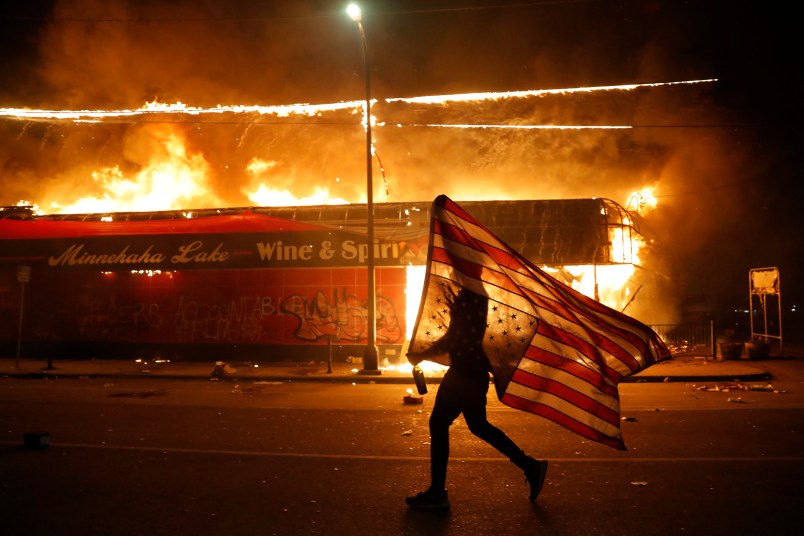The murder of George Floyd in Minneapolis was racial injustice at its worst. But the violent protests that it has sparked may have no good effect for those who have suffered from racial discrimination and, more broadly, for Americans who fear another four years of Donald Trump. A political scientist, Omar Wasow, cautiously makes the case in a New Yorker interview that these violent protests help law and order Republicans. I was actually around in the ‘60s and ‘70s, and have studied the political history of the times, and can attest to that fact.
The riots by African Americans in the ’60s were a prime factor in electing Ronald Reagan in 1966 as governor of California and Richard Nixon in 1968. After the 1968 election, Kevin Philips, a young Nixon aide, figured out that Republicans would enjoy a solid majority if they could combine Nixon’s law and order vote with that of segregationist George Wallace. If you look at what happened subsequently in states like Michigan and New Jersey, which had been dominated by liberal Republicans and Democrats, and which had also been the scene of major riots in the ’60s, you’ll see the effect of the backlash. Both states go Republican from 1972 through 1988
I don’t know if these violent protests will have a similarly profound effect. Who knows – by November, they could be forgotten. But for the moment, they are a gift to Donald Trump. If you look at polls, there are two constituencies in which Joe Biden seems to be doing much better than Hillary Clinton did in 2016: older voters and white workers without college diplomas. Those are two constituencies that are likely to be worried by the prospect of chaos in the streets. Biden needs a better vote than Clinton among those two constituencies if he is going to win in the Midwest and in Florida, North Carolina, and Georgia.
You can argue that what is immediately important is not who wins in November, but whether these protests will prompt police reform. And it seems true that Thursday’s night of violence in Minneapolis prompted Derek Chauvin being charged with murder. But I’d look at Baltimore and the results of the protests over Freddie Gray’s death at the hands of police in 2015. Yes, there were indictments of the police. But as Alec MacGillis has recounted, the police went on an enforcement strike afterwards; Baltimore has become the most dangerous big city in America; and businesses had begun leaving before the pandemic/depression.
The protests, of course, are the direct result of racial injustice in America. With his incendiary rhetoric, Trump, too, deserves blame. But the nature of the protests – the anarchy, the obliviousness to means to ends – reflects the profound lack of leadership on the American left. There are numbers and energy, but no constructive direction that could shape protests to accomplish needed ends the way Martin Luther King and the Southern Christian Leadership Conference or Walter Reuther and the United Auto Workers did during the late 1950s and early 1960s. Black Lives Matter and Indivisible are networks of people and groups. They are rallying cries, not organized movements with recognizable leaders. The labor movement is a shell of its past. The Democratic Socialists of America has impressive numbers, but is dominated ideologically by far leftists who even refuse to endorse Biden against Trump. Bernie Sanders’ Our Revolution became a lame appendage of his campaign.
You want to know what four more years of Trump could look like in America? Think of the protests in Minneapolis and elsewhere, on the one hand, and the armed militias in state capitols demanding that the states “open up.” Magnify their numbers and frequency. Think of America from 1854 to 1860 or during Nixon’s first term, when there were about four bombings a day. It’s not a pretty picture, and it’s one that I desperately hope that we can avoid.






